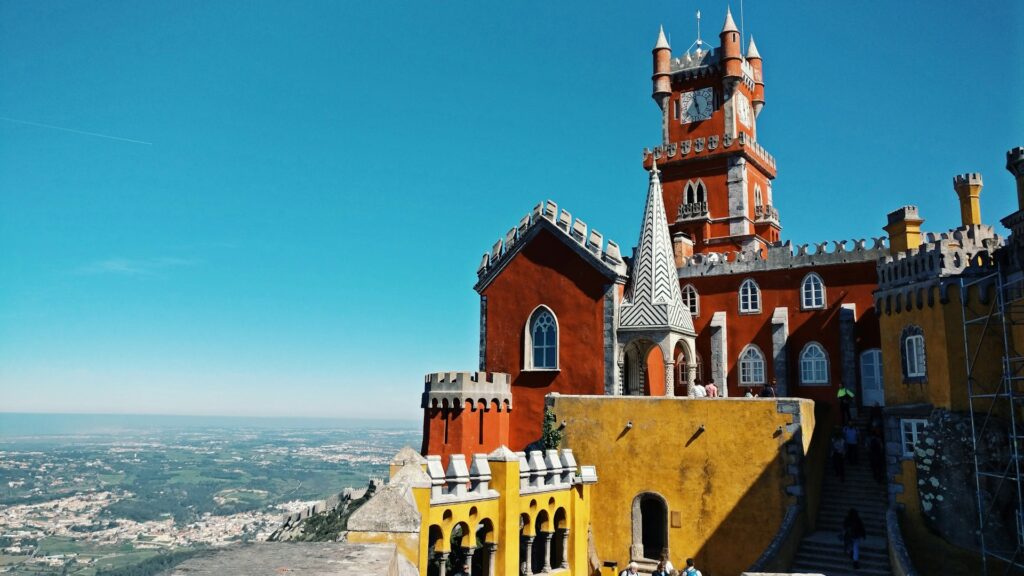Discover Europe's Top 8 Palaces
Europe boasts a wealth of architectural wonders, and among its most magnificent are its palaces, each steeped in history and grandeur. These palaces not only showcase the opulence of European royalty but also serve as living museums of art, culture, and political intrigue. From the majestic Versailles in France, with its sprawling gardens and Hall of Mirrors, to the iconic Buckingham Palace in London, the official residence of the British monarch, Europe’s palaces are synonymous with splendor and prestige. Other notable mentions include the Alhambra in Spain, a masterpiece of Moorish architecture, and the Schönbrunn Palace in Austria, a Baroque marvel set against meticulously manicured gardens. Whether exploring the ornate interiors of the Peterhof Palace in Russia or the fairytale-like Neuschwanstein Castle in Germany, each palace offers a glimpse into Europe’s rich heritage and artistic legacy. Discovering these top eight palaces promises an unforgettable journey through the continent’s cultural tapestry, where the past and present seamlessly intertwine.

Pena Palace (Portugal):
Pena Palace, nestled in the picturesque town of Sintra near Lisbon, Portugal, stands out as a masterpiece of Romanticist architecture. Its vividly colored facades, blending bright yellows and deep reds, create a striking contrast against the lush greenery of the Sintra Mountains. Inside Pena Palace, visitors are treated to a journey through opulent rooms adorned with intricate tilework, ornate furnishings, and historical artifacts that tell the story of Portugal’s royal past. The palace’s interior reflects a blend of Moorish, Gothic, and Manueline influences, showcasing its rich cultural heritage and the eclectic tastes of its former royal residents. Beyond its architectural splendor, Pena Palace offers breathtaking panoramic views from its terraces, providing a glimpse into both Portugal’s royal history and its natural beauty.
Royal Palace of Madrid (Spain):
The Royal Palace of Madrid, a magnificent symbol of Spain’s royal heritage, stands prominently in the heart of the capital city. Built in the 18th century, this grandiose palace serves as the official residence of the Spanish royal family, although it is primarily used for state ceremonies and official events today. The palace impresses visitors with its vast scale, opulent halls, and stunning architecture, reflecting a blend of Baroque and Classical styles. Inside the Royal Palace of Madrid, visitors can explore lavishly decorated rooms filled with royal collections of art, furniture, and historical artifacts, offering a glimpse into the country’s regal past. Highlights include the Throne Room, the Royal Armory with its impressive collection of weaponry, and the beautifully landscaped Royal Gardens. For those planning to visit, Royal Palace of Madrid tickets can be purchased online in advance to avoid long queues and ensure a seamless experience exploring one of Europe’s most distinguished royal residences.
Versailles Palace (France):
Versailles Palace, situated just outside Paris, is an unparalleled testament to the grandeur and opulence of French monarchy. Built during the 17th century under the reign of Louis XIV, the Sun King, Versailles was originally a hunting lodge but was transformed into a lavish palace that became the epicenter of political power in France. Its architecture, characterized by symmetrical lines, ornate decorations, and extensive use of gold leaf, epitomizes the Baroque style. Inside Versailles Palace, visitors are treated to a breathtaking array of grand apartments, including the Hall of Mirrors, a masterpiece of 17 mirrored arches that reflect the palace’s vast gardens through 17 windows overlooking the stunning landscape designed by André Le Nôtre. The palace also houses the opulent Royal Chapel, the lavish King’s and Queen’s Apartments, and the world-renowned Versailles Gardens, with its meticulously manicured lawns, fountains, and sculptures. A visit to Versailles Palace offers a glimpse into the lavish lifestyle of French royalty and the cultural legacy that continues to captivate visitors from around the globe.
Buckingham Palace (United Kingdom):
Buckingham Palace, located in the heart of London, serves as both the official residence and administrative headquarters of the British monarch. This iconic palace has been a focal point of national celebrations, royal ceremonies, and diplomatic affairs for centuries. Originally built in 1703 as a private townhouse for the Duke of Buckingham, it was later acquired by King George III in 1761 and subsequently transformed into a royal residence. Today, Buckingham Palace stands as a symbol of British monarchy and national identity. Visitors can witness the Changing of the Guard ceremony, a time-honored tradition that takes place in front of the palace, showcasing the meticulous discipline of the Queen’s Guard. The State Rooms, which are open to the public during the summer months, offer an opportunity to marvel at the palace’s grandeur, including its ornate ceilings, fine furnishings, and impressive art collection. Surrounded by the vast Buckingham Palace Gardens, this historic landmark continues to embody the splendor and tradition of the British monarchy while remaining a significant cultural attraction in London.
Schönbrunn Palace (Austria):
Schönbrunn Palace, nestled in Vienna, Austria, is a testament to the grandeur and elegance of the Habsburg monarchy. Initially built as a hunting lodge in the late 17th century, it was later expanded and transformed into a magnificent summer residence under Empress Maria Theresa during the 18th century. The palace’s architecture combines Baroque elements with Rococo flourishes, featuring a striking yellow facade adorned with intricate sculptures and ornate details. Inside Schönbrunn Palace, visitors can explore over 1,400 rooms, each meticulously decorated in styles ranging from Rococo to Neoclassical, reflecting the tastes of different imperial rulers. Highlights include the Grand Gallery, where lavish banquets and celebrations were held, and the opulent Mirror Room, where a young Wolfgang Amadeus Mozart performed for the royal court. The palace is also surrounded by expansive gardens and the Gloriette, a hilltop structure offering panoramic views of Vienna. Today, Schönbrunn Palace is a UNESCO World Heritage site and a popular tourist destination, offering a glimpse into Austria’s imperial history and architectural splendor.
Peterhof Palace (Russia):
Schönbrunn Palace, nestled in Vienna, Austria, is a testament to the grandeur and elegance of the Habsburg monarchy. Initially built as a hunting lodge in the late 17th century, it was later expanded and transformed into a magnificent summer residence under Empress Maria Theresa during the 18th century. The palace’s architecture combines Baroque elements with Rococo flourishes, featuring a striking yellow facade adorned with intricate sculptures and ornate details. Inside Schönbrunn Palace, visitors can explore over 1,400 rooms, each meticulously decorated in styles ranging from Rococo to Neoclassical, reflecting the tastes of different imperial rulers. Highlights include the Grand Gallery, where lavish banquets and celebrations were held, and the opulent Mirror Room, where a young Wolfgang Amadeus Mozart performed for the royal court. The palace is also surrounded by expansive gardens and the Gloriette, a hilltop structure offering panoramic views of Vienna. Today, Schönbrunn Palace is a UNESCO World Heritage site and a popular tourist destination, offering a glimpse into Austria’s imperial history and architectural splendor.
Topkapi Palace (Turkey):
Topkapi Palace, located in Istanbul, Turkey, stands as a magnificent symbol of the Ottoman Empire’s power and grandeur. Constructed in the 15th century by Sultan Mehmed II shortly after the conquest of Constantinople, it served as the primary residence and administrative headquarters of the Ottoman sultans for nearly 400 years. The palace complex is a sprawling ensemble of pavilions, courtyards, and gardens overlooking the Bosphorus Strait, offering stunning views of Istanbul and the Golden Horn. Inside Topkapi Palace, visitors can explore a series of elaborately decorated chambers, including the Imperial Council Chamber, the Harem, and the Treasury, which houses an impressive collection of Ottoman artifacts, jewelry, and relics. The palace grounds also feature beautiful gardens, kiosks, and pavilions such as the Baghdad Pavilion and the Revan Pavilion, each reflecting the opulence and cultural richness of the Ottoman era. Today, Topkapi Palace stands as a UNESCO World Heritage site and remains one of Istanbul’s most iconic landmarks, inviting visitors to delve into the history and splendor of Turkey’s imperial past.
Royal Palace of Stockholm (Sweden):
The Royal Palace of Stockholm, located on the picturesque waterfront of Gamla Stan (Stockholm’s Old Town), stands as a symbol of Sweden’s rich royal history and cultural heritage. Serving as the official residence of the Swedish monarch, although primarily used for ceremonial purposes today, the palace is one of the largest in Europe with over 600 rooms. Visitors can explore the beautifully preserved Royal Apartments, showcasing luxurious Baroque interiors, magnificent halls, and royal collections of art and furnishings. The palace also houses the Royal Chapel, where important royal ceremonies and events are held, and the Royal Armory, displaying historic royal regalia, including ceremonial armor and carriages. Set against the backdrop of Stockholm’s historic architecture and scenic views of the Baltic Sea, the Royal Palace of Stockholm offers a captivating glimpse into Sweden’s monarchy and its cultural legacy, making it a significant landmark and cultural attraction in the heart of the capital city.
